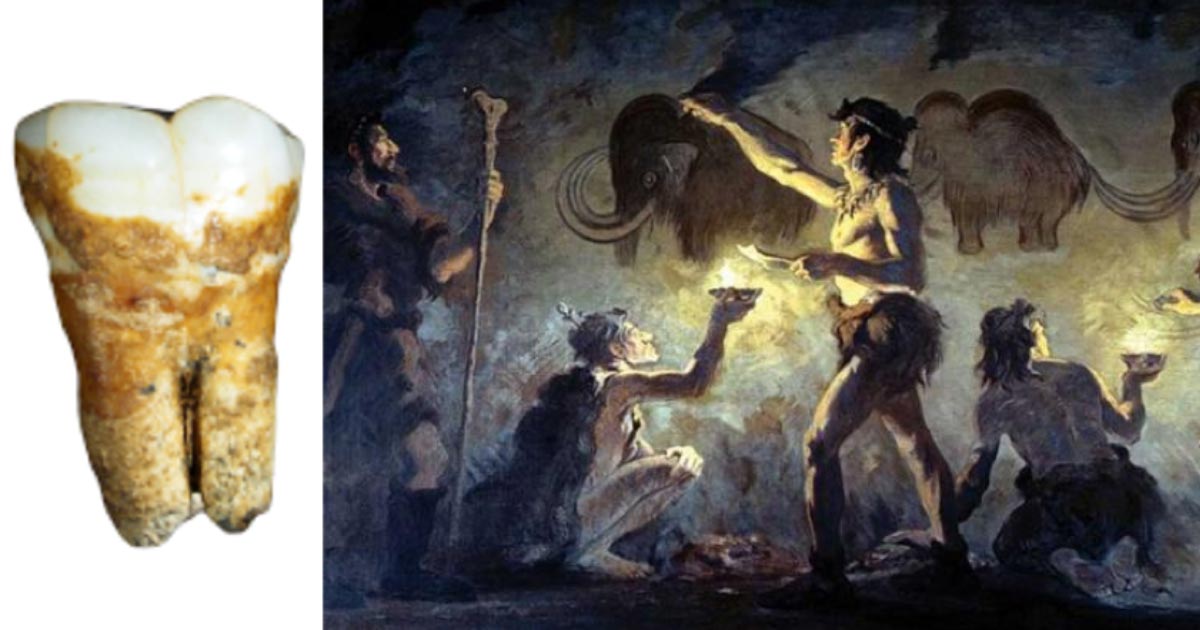Aurignacian Secrets Revealed in Cutting-Edge Dental Research
Who exactly were the Aurignacians who lived in the Levant 40,000 years ago? They first appeared in Europe some 43,000 years ago, bringing a cultural golden period of the Paleolithic with them. Their bone tools, artifacts, jewelry, musical instruments, and cave paintings, show the Aurignacian populations were highly creative, but like many of the world’s best artists they are something of a mystery.
Researchers from Tel Aviv University, the Israel Antiquities Authority, and Ben-Gurion University now report that these culturally sophisticated yet mysterious humans migrated from Europe to the Levant some 40,000 years ago, shedding light on a significant era in the region's history.
For years, researchers believed that modern man's entry into Europe led to the rapid decline of the Neanderthals, either through violent confrontation or wresting control of food sources. But recent genetic studies have shown that Neanderthals did not vanish. Instead, they assimilated into modern human immigrant populations. The new study adds further evidence to substantiate this theory.
- Did Prehistoric Middle Eastern Culture Visit Europe, Spawn Artistic Culture, and Leave?
- New Evidence Questions the Time and Place of Neanderthal Extinction
- Fragments of 40,000 year old female ‘Venus’ carving found
Neanderthal and Human Teeth
Through cutting-edge dental research on six human teeth discovered at Manot Cave in the Western Galilee, Dr. Rachel Sarig of TAU's School of Dental Medicine and Dan David Center Center for Human Evolution and Biohistory Research, Sackler Faculty of Medicine in collaboration with Dr. Omry Barzilai of the Israel Antiquities Authority and colleagues in Austria and the United States, have demonstrated that Aurignacians arrived in modern-day Israel from Europe some 40,000 years ago - and that these Aurignacians comprised Neanderthals and Homo sapiens alike.
A report on the new findings was published in the Journal of Human Evolution on October 11.

View of the cave. (B) Archaeological layers attributed to the Early Upper Paleolithic cultures in the cave. (C) Map of northern Israel showing the location of Manot Cave. (Sarig et al)
"Unlike bones, teeth are preserved well because they're made of enamel, the substance in the human body most resistant to the effects of time," Dr. Sarig explains. "The structure, shape, and topography or surface bumps of the teeth provided important genetic information. We were able to use the external and internal shape of the teeth found in the cave to associate them with typical hominin groups: Neanderthal and Homo sapiens."
The researchers performed in-depth lab tests using micro-CT scans and 3D analyses on four of the teeth. The results surprised the researchers: Two teeth showed a typical morphology for Homo sapiens; one tooth showed features characteristic of Neanderthals; the last tooth showed a combination of Neanderthal and Homo sapiens features.
- The Mystical Pentatonic Scale and Ancient Instruments, Part I: Bone Flutes
- Archaeologists Piece Together Ancient Ice Age Artwork
- 26,000-Year-Old Child Footprints Found Alongside Paw Prints Reveal Oldest Evidence of Human-Canine Relationship

Manot Cave right upper third premolar – probably modern human (top) and Lower right second deciduous molar – possibly Neanderthal (bottom). (Sarig et al)
This combination of Neanderthal and modern human features has, to date, been found only in European populations from the early Paleolithic period, suggesting their common origin.
The Important Cultural Contributions of Aurignacian People
"Following the migration of European populations into this region, a new culture existed in the Levant for a short time, approximately 2,000-3,000 years. It then disappeared for no apparent reason," adds Dr. Sarig. "Now we know something about their makeup."
"Until now, we hadn't found any human remains with valid dating from this period in Israel," adds Prof. Israel Hershkovitz, head of the Dan David Center, "so the group remains a mystery. This groundbreaking study contributes to the story of the population responsible for some of the world's most important cultural contributions."

“Löwenmensch figurine, found in the Hohlenstein-Stadel cave of Germany's Swabian Alb and dated at 40,000 years old, is associated with the Aurignacian culture and is the oldest known anthropomorphic animal figurine in the world.” (Dagmar Hollmann/CC BY SA 4.0)
Top Image: An Aurignacian tooth found in the Manot Cave, Israel. (Tel Aviv University) Cro-Magnon artists painting in Font-de-Gaume by Charles Robert Knight. (Public Domain)
The article, originally titled ‘Humans migrated from Europe to the Levant 40,000 years ago.’ was originally published on Science Daily. It has been edited for style and length.
Source: American Friends of Tel Aviv University. "Humans migrated from Europe to the Levant 40,000 years ago: Discovery of teeth in Manot Cave sheds light on a population known for its cultural contributions." ScienceDaily. ScienceDaily, 5 November 2019.
References
Rachel Sarig, Cinzia Fornai, Ariel Pokhojaev, Hila May, Mark Hans, Bruce Latimer, Omry Barzilai, Rolf Quam, Gerhard W. Weber. ‘ The dental remains from the Early Upper Paleolithic of Manot Cave, Israel.’ Journal of Human Evolution, 2019; 102648 DOI: 10.1016/j.jhevol.2019.102648




















Comments
While this short missive on the subject is fascinating, I get the feeling after reading the attributions that this is a cut and paste job from another website.